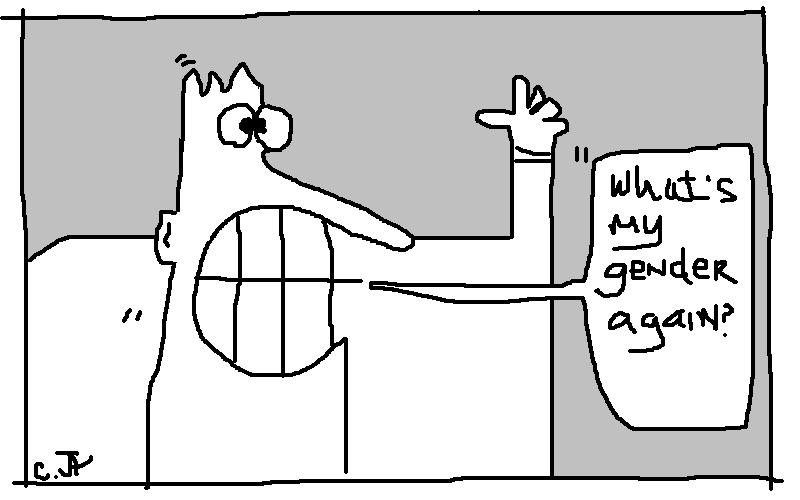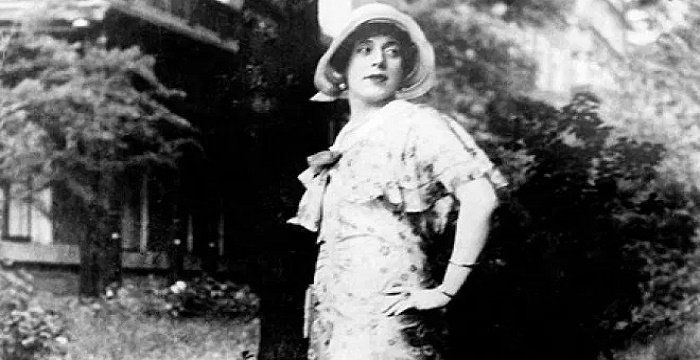On Transsexual Metaphors

When One Just Won’t Do
As a transsexual I live with a sad, dry reality: I get one metaphor to describe my choices and experiences.
I was born in the wrong body.
That’s it.
If I discuss choice, people seem to get antsy. How can you choose your gender?? If I discuss the socio-political-system (or the“pharmacopornographic era” by Paul B. Presadio) people lose interest in my/the story.
We live under a wet blanket of boring narrative expectations in which the reader can’t count past one.
But I think we rob both the reader and ourselves every time we choose this metaphor.
Some of the fault can be found in language. About 80 years ago, Lili Erbe observed a phenomenon hounding transsexuals still today: language can’t adequately describe our experiences.
“Each step forwards to become the person we are makes it harder to go backwards, to return to the shadowy, private world of closed doors and shuttered windows. The experience, the awakening of one’s true self, after being so long suppressed, can never be adequately explained with language.”

Lili Erbe
In 2019 Sam Kiss writes in the“Chronology of the Body”:
The only story they believe is one where I’ve always wanted to wear men’s underwear. They wonder who takes them off and what that makes them and what bathroom I take them off in. They ask, “Did you always know?” and I think back to the color red and clay figures and library books and say, “I have never known what it means to be a body.”
They do not know what to say to this, so they tell me I was born in the wrong body, as if there is a right body somewhere out there. They tell me this, and I wonder if their souls ever feel homeless, too.
In English, we have two genders and two sexes. If you aren’t one, you must be the other. Evolutions in language to include hir and zie often result in people refusing to use them, as in “You can’t make me use your words.”
Besides the restrictions in the English language, we must learn the languages of science and medicine. Whether we want to or not, we must become conversant in_their_words while they prefer we remain silent.
Science and medicine constructed our narratives a very long time ago and we use their words every time we say we are born in the wrong body.
Also, narrative conventions require us to discuss our experiences from a singular, personal perspective. We must use the pronoun “I” at all times. Our origins must be from birth. We must describe to everyone, except our closest loved ones, and even then we might stay quiet, a perfectly formed gender, unchanged by time or nature.
The “institutional force” that orders “somatic facts” are manifest in “the inability of language to represent the transgendered subject’s movement over time between stably gendered positions in a linguistic structure” (Rage, 241).
Chronobiopolitical forces bind bodies to essences fantasized to be unchanging, pre-existing and untouched by the vicissitudes of temporal life.
I like the metaphor of the map, mapmaking and cartography to describe my history.
Here’s a Rough Draft:
The scientists gave me a one map with a single line on it. At one point they wrote “woman” and at the other point they wrote “man.”
They wrote nothing else on the map. This wasn’t a spiritual map, after all, but a scientifically drawn map. Blanks, which might represent areas of exploration in a spiritual map, reflected facts. The only facts that mattered were the two points on the map.
There are only two genders. Nothing else can or does matter.
I believed them, too. Nothing else could or did matter. I believed that, too, until I entered The Land of Endless Qualms. The Lands of Self-Determination, Complexity and Complicity didn’t exist on their map, either.
It was as if the psycho-therapeutic mapmakers created an Atlas of Gender as they wished it to be, one that has rarely, if ever, existed.
But we’ve been creating our Atlases of Gender/Atlas of Genders for as long as we’ve existed. We’re rewriting the Atlas of Genders with lines and shadings also reflected in the deep lines in our foreheads and around our eyes.
Our maps contain choices we didn’t or couldn’t make as well as knowledge revealed only as we go.
Our maps are living documents, not dead paper.
Inspiration
- Maps of the Imagination: the Writer as Cartographer
- The Phantom Atlas: the Greatest Myths, Lies and Blunders on Maps
Subscribe to Across and Beyond